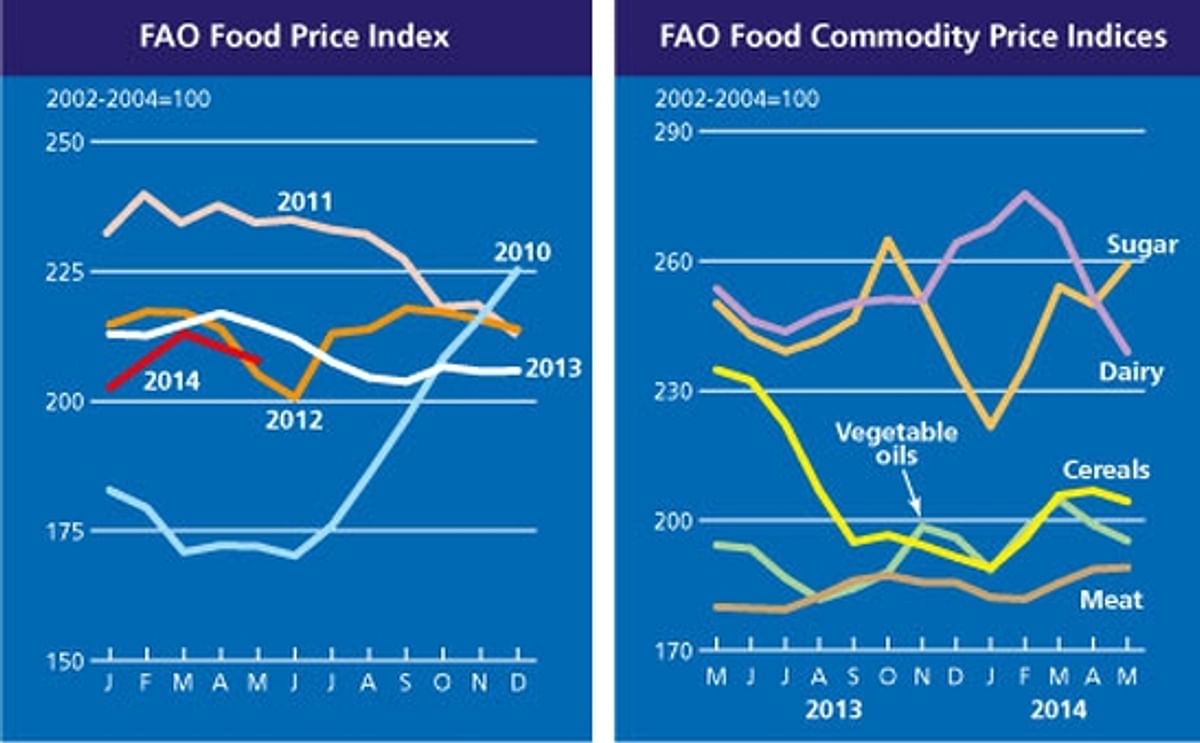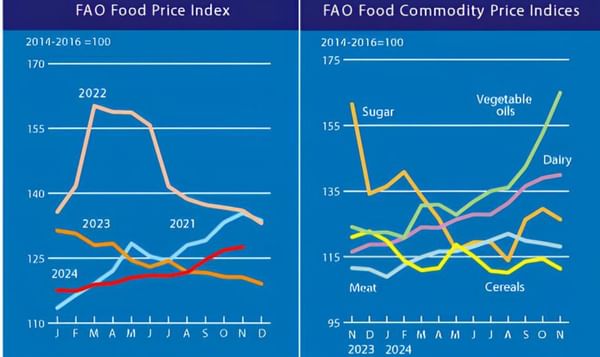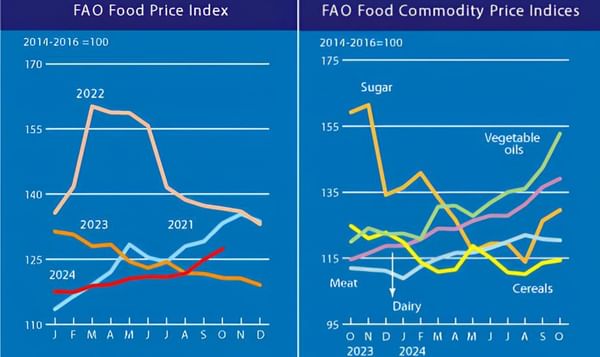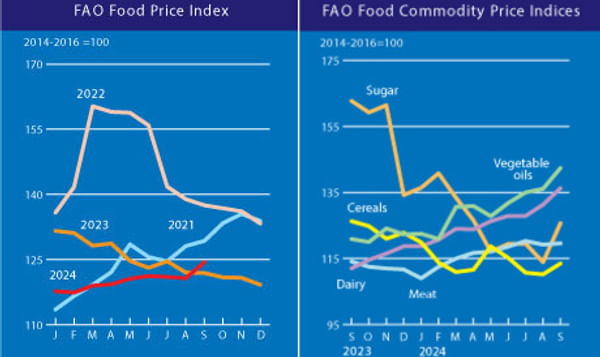The FAO Food Price Index averaged 207.8 points in May 2014, down 2.5 points (or 1.2 percent) from April and nearly 7 points, or 3.2 percent, below May 2013. After rising to a ten-month high of 213 points in March, the Index fell in April and again in May, pressured by lower dairy, cereal and vegetable oil prices. However, sugar made strong gains in May, while meat remained firm.
The FAO Cereal Price Index averaged 204.4 points in May, down 2.4 points (or 1.2 percent) from April and 30 points (or 13 percent) below last year. The decline in May was mostly triggered by maize prices, which fell in response to favourable growing conditions and good supply prospects in 2014/15. Rice prices were little changed. However, wheat prices, which had firmed at the start of the month on slow spring planting in the United States and tensions in Ukraine, declined during the second half of the month, with weather conditions improving in the United States and shipments from Ukraine continuing normally.
The FAO Vegetable Oil Price Index averaged 195.3 points in May, down 3.7 points (or 1.8 percent) from April, reflecting lower quotations of palm, soy and rapeseed oils. Palm oil prices fell for the second consecutive month on rising output in Southeast Asia, continued strength in Malaysia's currency and subdued global import demand. The softening of soy oil was caused by strong soybean crushing in South America and initial forecasts of an ample global soybean crop in 2014/15. The drop in rapeseed oil prices mainly stemmed from an improvement in global export availabilities and the prospect of a record harvest in the EU.
The FAO Dairy Price Index averaged 238.9 points in May, representing a second sharp monthly fall, and a decline of 12 points (or 5 percent) over April. The market for dairy commodities is readjusting, following a period of exceptionally high prices in 2013 and early 2014, caused by limited export supplies. In recent months, the production outlook has improved and, in general, buyers are purchasing only for immediate needs, in the expectation that prices may fall further; consequently, average prices for all commodities declined during the month.
The FAO Meat Price Index averaged 189.1 points in May, nearly unchanged from April, as prices of all the products that make up the index moved little. Concerns that export supplies of pigmeat might be constrained by an outbreak of Porcine Epidemic Diarrhea virus in the United States appear to have been allayed as prices for this product registered only a slight increase. Ovine meat prices are moving seasonally higher, as the production year draws to a close in Oceania.
The FAO Sugar Price Index averaged 259.2 points in May, up 9.3 points (or 3.7 percent), from April. Prices rose amid early forecasts for the 2014/15 season pointing out to a possible production deficit, with El Nino weather likely to exacerbate the fall in output. Overall, the price increase was more pronounced during the first half of the month, while in the second half, the price rally was somewhat subdued by indications of large sugar inventories in India and Thailand.
In May FAO Food Price Index fell for the second consecutive month

¿Te gustaría recibir noticias como esta por correo electrónico? ¡Únete y suscríbete!
Únete a nuestra Telegrama ¡Canal para actualizaciones periódicas!
Empresa Destacada
Contenido Patrocinado
Contenido Patrocinado
Contenido Patrocinado
Contenido Patrocinado
Contenido Patrocinado










